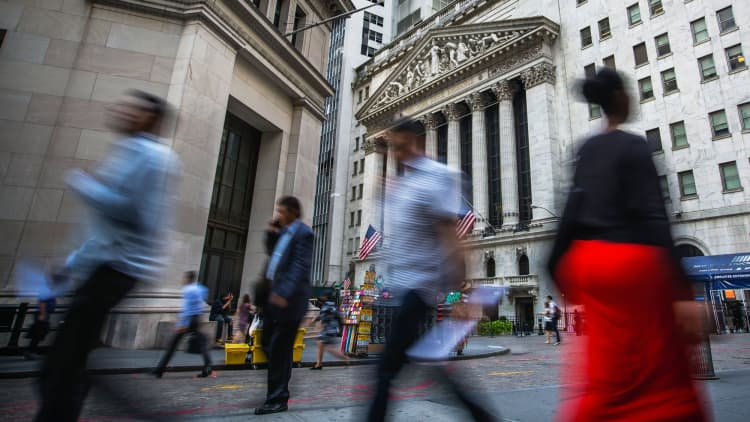
Companies will buy back a record amount of their own shares in 2018, with nearly half the purchases funded with the windfall from the Tax Cuts and Jobs Act, according to a J.P. Morgan analysis.
Investors should keep an eye on who is doling out the biggest level of buybacks, particularly if the stock market continues to experience turbulence.
J.P. Morgan strategists estimate that firms in total will authorize at least $800 billion in buybacks, a whopping 51 percent increase from 2017. Analysts across Wall Street are widely expecting a jump in share repurchases, but J.P. Morgan's forecast is the most aggressive.
Pushing the big increase will be a windfall from the new tax law enacted in December. The legislation cut the corporate tax rate from 35 percent to 21 percent and levied a one-time tax on profits stored overseas that is expected to lead to a high level of repatriation for the $2.5 trillion in offshore cash.
Breaking it down, J.P. Morgan expects companies to dedicate $100 billion generated through tax cuts and resulting stronger earnings plus $200 billion from the repatriation windfall. During the nearly completed fourth-quarter earnings season, companies already have announced a record $151 billion in buybacks.
If the tax incentives aren't enough, the recent correction in the stock market — a 10 percent drop in the major averages — also serves a buyback incentive.
"Corporates tend to accelerate buyback programs during market sell-offs," Dubravko Lakos-Bujas, U.S. head of equity strategy at J.P. Morgan, said in a note to clients. "In fact, our analysis suggests that stocks with higher buyback yields and new announcements outperform relative to sector peers, especially during corrections and recessions."
Technology, for instance, has been an outperformer since the market dip began in February. The sector has been by far the leader in announced buybacks this year at $69 billion.
The $800 billion target could be eclipsed, Lakos-Bujas said, "if volatility remains elevated with corporates opting for repurchases over dividends and M&A."
Investors aren't the only ones watching what companies will be doing with their tax cut cash. House and Senate lawmakers grilled Federal Reserve Chairman Jerome Powell during his testimony this week on whether he thought companies would return huge chunks of their tax savings to investors, and what the ramifications might be.
Powell largely stayed out of the debate, though he did say Thursday that money returned to shareholders does find its way back into the broader economy.
From an investor perspective, Lakos-Bujas said following buybacks is a winning strategy and in fact will be a key player in stanching any huge market sell-offs.
"With strong buyback activity persisting and systematic de-risking behind us, we recommend investors to continue buying market dips," he said. "More so, 1-month momentum should turn positive next week and trigger equity buying by systematic strategies."
The analysis is somewhat similar to one offered earlier this week by David Kostin, chief U.S. equity strategist at Goldman Sachs, in that it indicates a surge in buybacks. However, Kostin's forecast was less aggressive, at $650 billion, and he found using cash return to shareholders as a less effective strategy.
"Firms investing the most for future growth should outperform in the current economic environment," Kostin wrote.
The J.P. Morgan analysis also points out that most of the buybacks will be funded by cash, with companies not using cheap debt as they have during previous rounds.
"While it would be more attractive to reinvest internally generated cash-flow into organic growth opportunities via capex and R&D, companies find it difficult to consistently reinvest retained earnings at attractive returns," the note said. "Given this challenge, we recommend investors continue to seek companies that run a more efficient capital structure with a consistent track record of returning capital to shareholders over companies with bloated cash balances."


